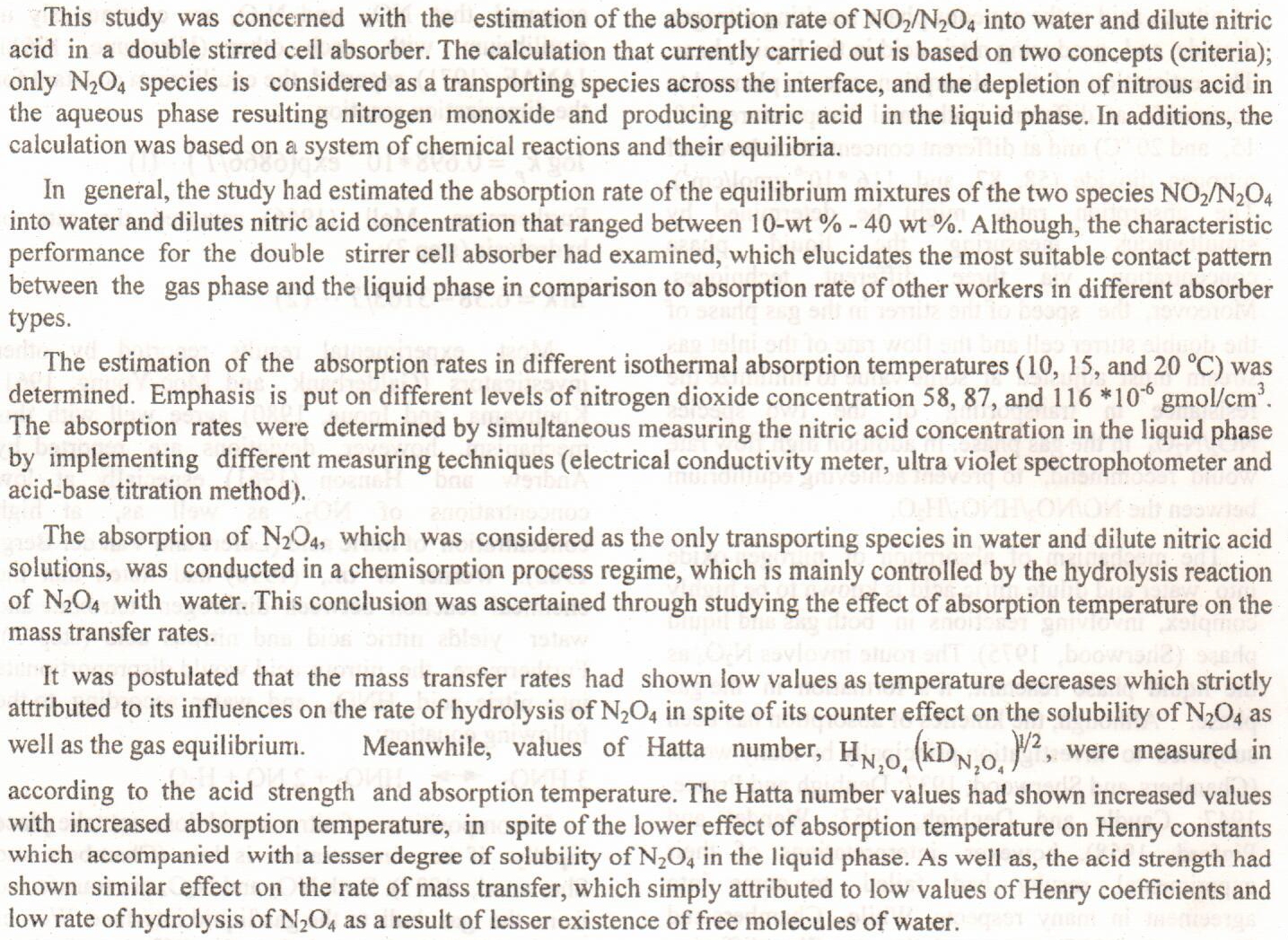
Water samples were collected from output of water for Al-Wahda plant where located in al-karrada area in Baghdad city to study water contamination with bacteria, fungi and Algae. The study lasted one year started on August, 2016 to July,2017.Results were acquired according to two tests performed, the first is biological test included total coliform,E.coli, pseudomonas aeruginosa, total fungi, Diatom and non Diatom Algae and the second is physiochemical test included temperature, turbidity and residual chlorine. The results of bacteria were within the permitted specification in the Iraqi standards no. 14/2270 for the year 2015 except August was exceeded the permitted standard for total coliform, it was 1.1< cell/100 ml.Total Fungi, Dia
... Show Moreraisin on mice in comparison with negative (phosphate buffer saline (PBS) and positive Mitomycin-C (MMC) controls. Moreover, the effect on fertility hormones (follicles stimulation hormone/FSH, lutenising hormone/LH) was also measured. The effect of the extracted samples were measured by employing cytogenetic analysis which included (the mitotic index (MI), chromosomal aberrations (CAs) and micronucleus (MN)) parameters. Results showed that significant increase in MI and significant reduction in both CAs and MN percentage were seen after treatment with both alcoholic and water extracts of the two raisins and alcoholic extracts was more effective than water extracts. On the other hand both the gold and black raisin enhanced the levels of the
... Show MoreIn this study, a new adsorbent derived from sunflower husk powder and coated in CuO nanoparticles (CSFH) was investigated to evaluate the simultaneous adsorption of Levofloxacin (LEV), Meropenem (MER), and Tetracycline (TEC) from an aqueous solution. Significant improvements in the adsorption capacity of the sunflower husk were identified after the powder particles had been coated in CuO nanoparticles. Kinetic data were correlated using a pseudo-second-order model, and was successful for the three antibiotics. Moreover, high compatibility was identified between the LEV, MER, and TEC, isotherm data, and the Langmuir model, which produced a better fit to suit the isotherm curves. In addition, the spontaneous and exothermic nature of the adsor
... Show More (29)
(29)
 (25)
(25)
The remove of direct blue (DB71) anionic dye on flint clay in aqueous solution was investigated by using a batch system for various dye concentrations. The contact time, pH, adsorbent dose, and temperature was studied under batch adsorption technique. The data of adsorption equilibrium fit with isotherm Langmuar and Freiundlich ,when the correlation coefficient used to elucidate the best fitting isotherm model. The thermodynamic parameters such as, ?Hº ,?Sº and ?Gº. Thermodynamic analysis indicated that the sorption of the dyes onto Flint clay was endothermic and spontaneous.
The present study utilised date palm fibre (DPF) waste residues to adsorb Congo red (CR) dye from aqueous solutions. The features of the adsorbent, such as its surface shape, pore size, and chemical properties, were assessed with X-ray diffraction (XRD), BET, Fourier-transform infrared (FTIR), X-ray fluorescence (XRF), and field emission scanning electron microscope (FESEM). The current study employed the batch system to investigate the ideal pH to adsorb the CR dye and found that acidic pH decolourised the dye best. Extending the dye-DPF waste mixing period at 25°C reportedly removed more dye. Consequently, the influence of the starting dye and DPF waste quantity on dye removal was explored in this study. At 5 g/L dye concentration, 48% d
... Show More (9)
(9)
 (6)
(6)
In the present study, activated carbon supported metal oxides was prepared for thiophene removal from model fuel (Thiophene in n-hexane) using adsorptive desulfurization technique. Commercial activated carbon was loaded individually with copper oxide in the form of Cu2O/AC. A comparison of the kinetic and isotherm models of the sorption of thiophene from model fuel was made at different operating conditions including adsorbent dose, initial thiophene concentration and contact time. Various adsorption rate constants and isotherm parameters were calculated. Results indicated that the desulfurization was enhanced when copper was loaded onto activated carbon surface. The highest desulfurization percent for Cu2O/AC and o
... Show MoreRemoval of Congo red, Rhodamine B, and Dispers Blue dyes from water solution have been achieved using Flint Clay as an adsorbent. The adsorption was studied as a function of contact time, adsorbent dose, pH, and temperature under batch adsorption technique. The equilibrium data fit with Langmuir, Freundlich and Toth models of adsorption and the linear regression coefficient R2 was used to elucidate the best fitting isotherm model. Different thermodynamic parameters, namely Gibb’s free energy, enthalpy and entropy of the on-going adsorption process have also been evaluated. Batch technique has been employed for the kinetic measurements and the adsorption of the three dyes follows a second order rate kinetics. The kinetic investigations al
... Show More (1)
(1)
